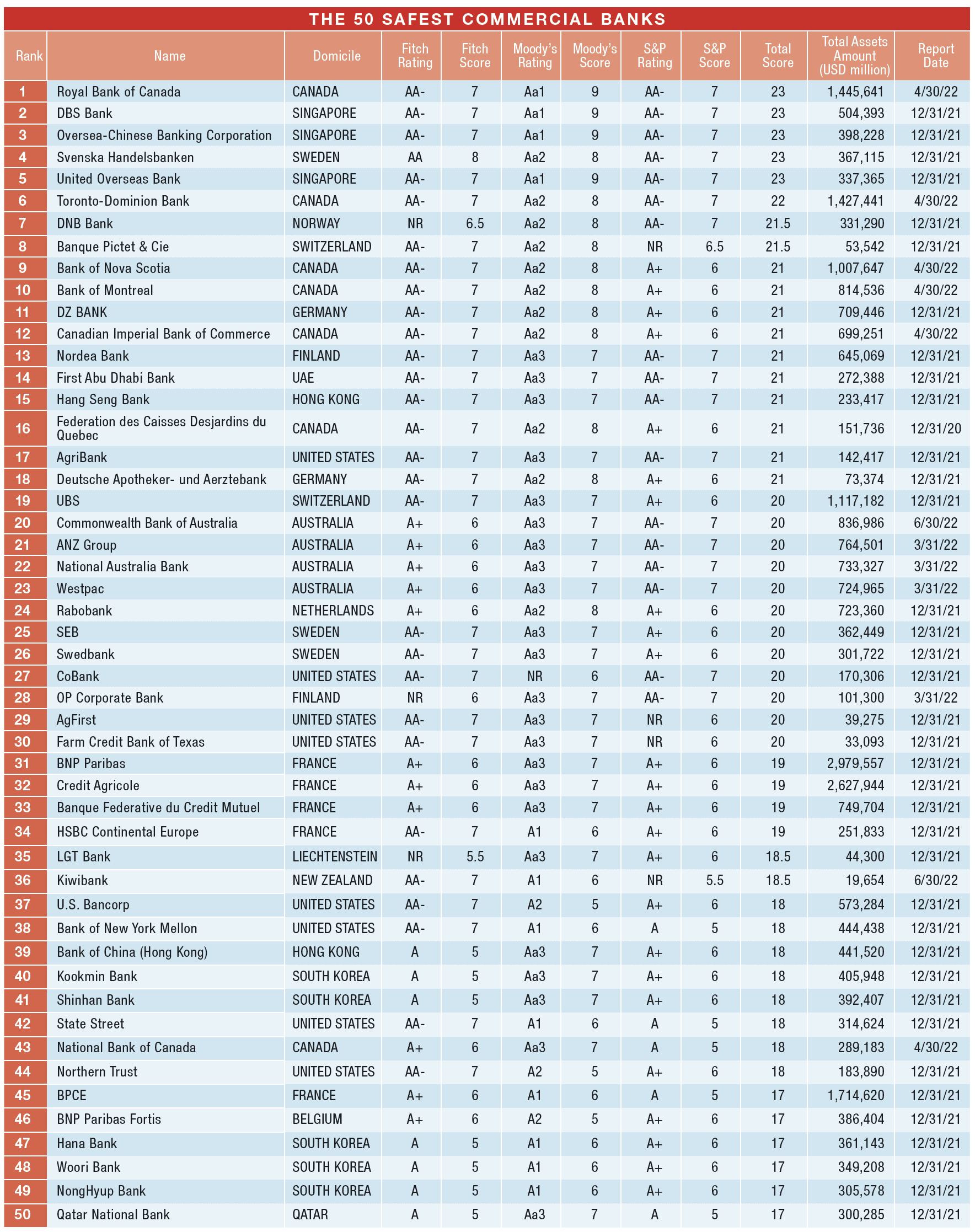The success of this year’s safest 50 commercial banks is grounded in diversified business lines and newly imagined products.

The resiliency of the institutions represented in this year’s rankings of the Safest Commercial Banks will again be tested as the global economic outlook deteriorates. These commercial banks derive considerable stability from their diversified business models that include wealth, and investment management, capital markets, trust and custody services, but don’t have the backing of state-ownership for support.
Many institutions emerged from the height of the pandemic with refocused business models to deliver enhanced products and services to their retail and corporate clients, and bank performance recovered as lending expanded and profitability improved. This progress faces a potentially swift reversal given aggressive central bank rate increases to fight inflation that will dampen global growth for the remainder of 2022 and through next year. As interest rates increased, these commercial banks enjoyed rising net interest margins as floating rate loans reprice, and as new loans are underwritten at higher rates. While margins are likely to remain elevated into 2023, given the frequency and magnitude of restrictive monetary policy from global central banks, this benefit is at risk of being offset by declining loan portfolios and higher credit costs as global economies contract.
This year’s Safest Commercial Bank ranking includes some notable shifts. Royal Bank of Canada leapfrogged to the top after an upgrade brought the giant bank’s score to par with smaller institutions. In its January upgrade rationale, Moody’s cited the bank’s robust and stable profitability, its diversified business model with leading market shares in Canada, as well as a growing presence in the US through its City National Bank franchise. Canadian banks are consistently well-represented in our annual rankings and RBC claimed the top position in three of the past four years, while three Canadian peers placed in the top 10.
Two German entities fell in our rankings as Moody’s downgraded DZ Bank (down four spots to No. 11) and Deutsche Apotheker-und Aerztebank (down 10 spots to No. 18) based on declines in loss-absorption buffers. Consequently, banks rounding out our top 20 shifted upward by one or two positions.
Sweden returns three entities with Svenska Handelsbanken at No. 4 while SEB fell 10 spots to No. 25 after the government loosened regulatory requirements. On the other hand, Swedbank rose six positions, to No. 26, as Fitch recognized the bank’s progress with strengthening anti-money laundering risk controls with an upgrade.
The largest four Australian banks retained their positions based on rating stability, however Suncorp-Metway fell out of our rankings as Fitch downgraded the bank following its planned sale to ANZ Group. National Bank of Kuwait also dropped out as a result of Fitch’s downgrade following the downgrade of Kuwait’s sovereign rating in January. These actions allowed Bank of China (Hong Kong) and South Korea’s NongHyup to enter this year’s rankings at No. 39 and No. 49, respectively.
Methodology: Behind the Rankings
Under the methodology for the World’s Safest Banks rankings, commercial banks that are majority state-owned or receive sponsorship by their governments or regional bodies are excluded. Institutions here may operate in the same markets as state-sponsored competitors but don’t benefit from government backing. Additionally, institutions which are wholly owned by their parent company are ineligible under our criteria.




